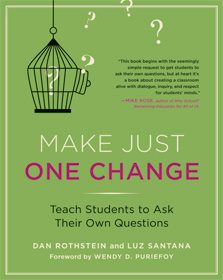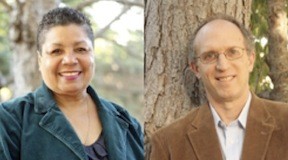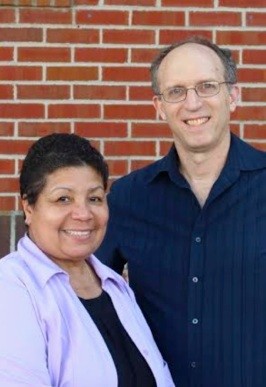By Nicole Cruz, RDH, BSDH
It’s vital that I structure my classroom as a learning environment, and not just a teaching environment. The difference is simple: in a learning environment, the focus is on the students and their learning. In a teaching environment, the focus is on the knowledge of the teacher. The whole point of education should be to help the students learn- and learn deeply. I think the common practice of having lecture as the primary source of instruction should be re-thought because it doesn’t always facilitate true deep learning. It leads to memorization of key points that the professor outlines in her Power Point presentation so the students can pass their tests. I am not saying that lecture is always a bad thing, but it shouldn’t be the emphasis of the class meeting. My goal as an instructor is to facilitate learning in the classroom. So, instead of constructing a teaching philosophy, I am outlining the basics of my learning philosophy. In my research, I discovered three key points that are very important to learning. They are foundational knowledge, learning to ask good questions, and passion.
 Foundational knowledge is important at any grade level, in any course, but it is especially important in an accelerated healthcare program. In the dental hygiene program where I work, the information comes fast and furious. The students take pre-requisite courses that should help them build the foundational knowledge that they need for the dental hygiene program, but often there are gaps that still need to be filled. If a student still doesn’t understand the physiology of the pancreas, she will be even more lost when we dive into topics in diabetes. If a student learned something incorrectly, how can new knowledge be learned that needs to build on the previous knowledge? I like to begin class by asking the class questions about what they learned previously. We play Kahoots to help refresh their memories, and we go over topics that need to be revisited: usually physiology.
Foundational knowledge is important at any grade level, in any course, but it is especially important in an accelerated healthcare program. In the dental hygiene program where I work, the information comes fast and furious. The students take pre-requisite courses that should help them build the foundational knowledge that they need for the dental hygiene program, but often there are gaps that still need to be filled. If a student still doesn’t understand the physiology of the pancreas, she will be even more lost when we dive into topics in diabetes. If a student learned something incorrectly, how can new knowledge be learned that needs to build on the previous knowledge? I like to begin class by asking the class questions about what they learned previously. We play Kahoots to help refresh their memories, and we go over topics that need to be revisited: usually physiology.
The problem is I only have so much class time, and even after a review, some students are still in need of help with foundational knowledge. As I’ve learned more about blended learning, I realize that this could be an amazing tool to help students gain the foundational knowledge they may be lacking. If students spend some of the class face-to-face with peers and the instructor and some of the class online, they will have the time they need to review the online resources that can help them learn or re-learn the information they need.
 I started thinking about how I learn the material before we discuss it in class. I realize that I never use our textbook as the only source of understanding the material, so why should I expect the students to do the same? I use Google constantly to find answers to my questions. If I need more clarification on a topic, I look at several online sources to find the answers. This is why it is so important to learn to ask good questions and to cultivate curiosity.
I started thinking about how I learn the material before we discuss it in class. I realize that I never use our textbook as the only source of understanding the material, so why should I expect the students to do the same? I use Google constantly to find answers to my questions. If I need more clarification on a topic, I look at several online sources to find the answers. This is why it is so important to learn to ask good questions and to cultivate curiosity.
I found a great resource for teaching students how to ask good questions. It’s a book called “Make Just One Change: Teach Students to Ask their Own Questions.” It made me realize that as teachers, in a “teaching environment,” we are the ones asking all the questions and students are spitting back answers. Deeper learning occurs when students, in a “learning environment,” can cultivate their curiosity by learning to ask good questions that lead to more questions.
The book outlines the Question Formulation Technique: “Step 1: Ask as many questions as you can. Do not stop to discuss, judge, or answer the questions. Write down every question exactly as it is stated. Change any statements into questions. Step 2: Introduce the question focus. Step 3: Produce questions. Step 4: Improve questions. Students decide which questions are open-ended vs. closed-ended and discuss the advantages or disadvantages for each. Step 5: Prioritize questions and share with peers the rationales for choosing those questions. Step 6: Discuss next steps. Step 7: Reflect.”
There is also a good video demonstrating the technique in a science class (Minigan, 2016). A student made an interesting comment at the end of the video: the technique not only allows a student to learn how to question, but it also helps to understand how other people think. By using the technique in small groups, the students learned how to collaborate with others and come up with even better questions together.
Passion or fun is also central to learning. Some information may seem dull, but it is necessary to understand (remember foundational knowledge?). Of course it’s ideal for students to pursue their passions, and if one is passionate about something, they will learn everything they can about what they love. I believe you can make almost any topic fun and interesting. In Gamify your Classroom, Farber (2015) introduces several games and ideas for lesson plans that integrate gaming and learning. Game-based learning can help make learning feel effortless- the way it should be! I also like to make the classroom more fun and interesting by adding creative hands-on activities. I supply the materials and some guidelines, and it’s truly amazing what the students come up with. I like to use food to help demonstrate lessons too.
In Radiography class, we make backwards PB&Js when we learn the layers of an X-ray film. After this, the students never forget the sequence of the film layers: bread (base), jelly (adhesive), crunchy peanut butter (emulsion with silver halide crystals) and smooth peanut butter (protective layer). We make eukaryotic cells in the beginning of Oral Histology out of jello and candy; this helps them remember the organelles and their functions. Food is fun, games are fun, and learning should be fun too!
I still have a lot to learn as a teacher, or as Dr. Harupnuik has appropriately coined “learning facilitator.” I plan to learn along with my students and remember that I’m not an “expert” on dental hygiene; it’s something to continually strive for. I’m just a little further along on my journey than the students are. I plan on using my own learning philosophy to continue bettering myself as a teacher. Changes will continue to occur in education and healthcare, so I need to constantly learn how to improve by asking questions, gaining knowledge, and keeping my passion for learning alive.
Nicole Cruz, RDH, BSDH, graduated from Southwestern College with an Associate of Science degree in Dental Hygiene in 2003 and was awarded a Bachelor of Science degree in Dental Hygiene from Northern Arizona University. She is currently pursuing a Master’s in Education: Digital Learning and Leading at Lamar University. Nicole worked as a clinical hygienist in San Diego, CA for four years, then moved with her family to San Antonio, Texas in 2007. After eleven years of clinical practice, she decided to pursue a career in teaching. She currently works as a dental hygiene instructor in San Antonio, TX. She loves the challenge of being an educator and enjoys teaching Radiography, Oral Embryology and Histology, Oral Pathology, Ethics and Law in Dental Hygiene, and Dental Office Management.
References
Amaral, K.E. & Shank, J. (2010). Enhancing Student Learning and Retention with Blended Learning Class Guides. Educause. Retrieved fromhttp://er.educause.edu/articles/2010/12/enhancing-student-learning-and-retention-with-blended-learning-class-guides
Ambrose, S., Bridges, M., DiPietro, M., Lovett, M., & Norman, M. (2010).How Learning Works. 7 Research-Based Principles for Smart Teaching. San Francisco, CA: Jossey-Bass.
Effective Use of Performance Objectives for Learning and Assessment. (2005). Teacher and Educational Development. Retrieved fromhttp://ccoe.rbhs.rutgers.edu/forms/EffectiveUseofLearningObjectives.pdf
Farber, M. (2015). Gamify your Classroom. New York, NY: Peter Lang Publishing.
Lynch, J. (2016). What do I have my students do in class and why. Talk About Teaching and Learning. Vol 62. Retrieved fromhttp://www.upenn.edu/almanac/volumes/v62/n24/talk-about-teaching.html
Minigan, A. (2016). The Question Formulation Technique in a High School Science Class. [Video file]. Retrieved from https://v1.rightquestion.org/high-school-science
Rothstein, D. and Satana, L. (2011). Make Just One Change: Teach Students to Ask Their Own Questions. Harvard Education Press.




Speak Your Mind